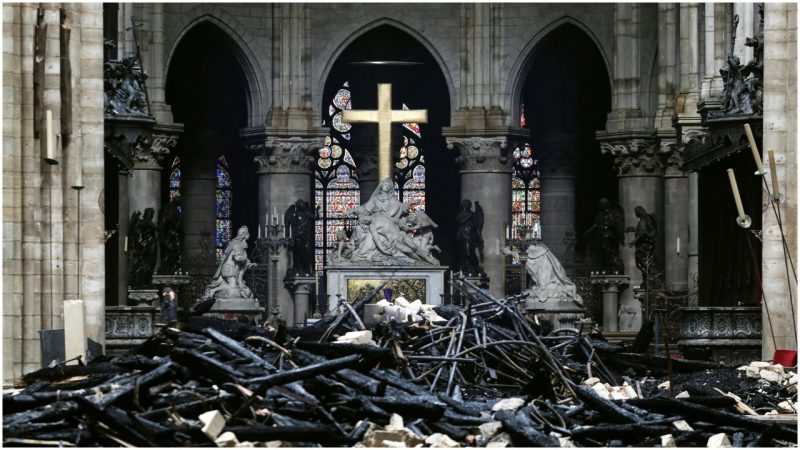For centuries, the Notre Dame cathedral in Paris has sheltered some of the world’s most sacred relics, artifacts, and works of art. As a horrendous fire raged over the Gothic structure on April 15th, causing its spire and ribbed roof to crumble, everyone feared for the fate of the treasures secured inside the cathedral.
Had the Holy Crown of Thorns been lost for example, which is considered to be the original crown of thorns placed on Jesus’s head as he was about to be crucified, that would have been a huge loss for Christianity. Fortunately, the Holy Crown of Thorns was among the items saved.
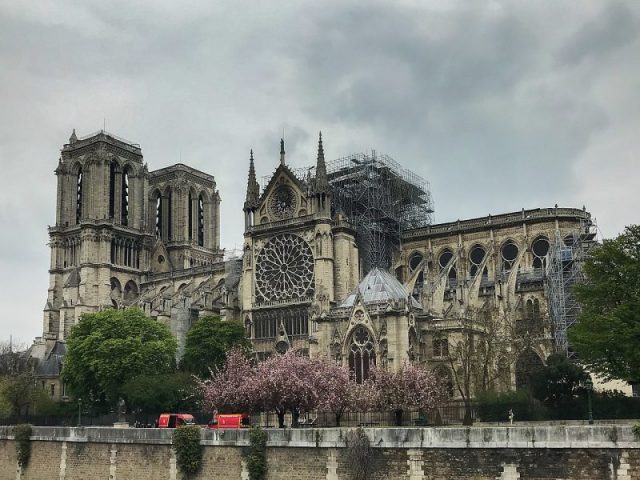
In the aftermath of the fire, the Paris Fire Brigade said on Twitter that Notre Dame’s stone construction was “saved” as well as the “main works of art.”
“We have avoided a complete disaster. But some five to 10 percent of the artwork has probably been destroyed, we have to face up to that,” also said Maxime Cumunel from France’s Observatory for Religious Heritage, the Guardian has reported.
A message from the Parisian Ingress Community
As many of you may already know, the Notre-Dame cathedral of Paris has been ravaged by flames earlier this week. The fire started under the spire in the evening and by the time people noticed it was already too late #embeddedreporter pic.twitter.com/b0IcPdIJlj
— Ingress Reporter (@AgentMarkJairo) April 17, 2019
Those engaged on the scene followed an already established plan on what should be done in case Notre Dame’s artifacts were threatened. The plan was activated quickly and was also supported by the Paris fire brigade chaplain Jean-Marc Fournier, thanks to whom, the Crown of Thorns and the Blessed Sacrament were saved.
A linen tunic of Saint Louis, who had acted as the King of France during the 13th-century, was also saved from loss. Saint Louis is said to have worn that particular garment when he brought the sacred Crown of Thorns to Paris. After his life ended, he was canonized as a saint by the church, in 1297.
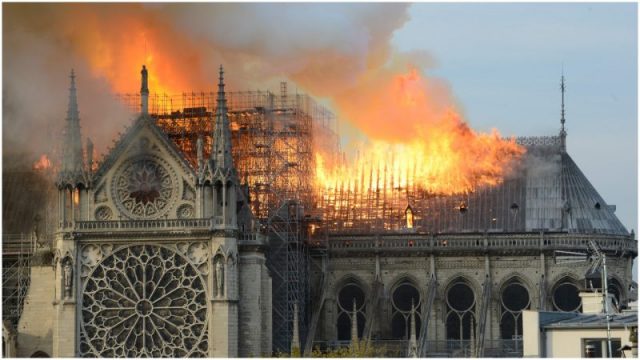
Fragments of the True Cross, believed to have been from the one upon which Jesus was crucified, and an accompanying original nail, were both spared from destruction as well, according to French media reports.
Saved from the ruins was a copper rooster that graced the top of the spire that collapsed during the fire in what was one of the most dramatic moments of the entire calamity. French ambassador to the U.S. Gerard Araud reportedly tweeted that the copper rooster “contains relics for the protection of Paris,” the CNN reported. Check out the video for a closer look:
https://youtu.be/JM1vOYQr1vI
The cathedral’s famed two towers were left intact by the hazard, although small fires had begun to develop there. Intervention in this part of the structure was quick. Before the construction of the Eiffel Tower at the end of the 19th-century, the North and South towers of the Notre Dame stood as the tallest on the Paris skyline. The first was erected in 1240, the former ten years after that.
Drone footage shows stunning views of Notre Dame Cathedral just five months before the heartbreaking fire. https://t.co/I2U2ZXMmcl pic.twitter.com/VLLy8JluBp
— USA TODAY (@USATODAY) April 17, 2019
The South Tower keeps Emanuelle, the cathedral’s main bell, which has been chimed for some of the most important historical events in France, including the announcement that World War Two had ended. The bell is there, though initial reports suggested it’s unknown if any harm was inflicted on it.
The Grand Organ kept at Notre Dame was reported to have survived, although this most treasured of musical instruments may have suffered damage not from the heat of the fumes but from the water poured inside the building in response to the fire. It is due to be determined if the piece can be played. Some of its 8,000 pipes are dated to the Middle Ages.
The three emblematic stained-glass windows of Notre Dame, known as the Rose Windows, seem to have made it unaffected through the disaster too. However, experts are due to make further examination on each piece separately.
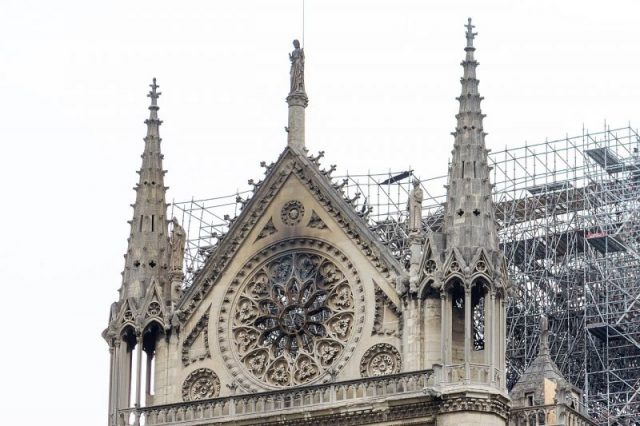
One of Notre Dame’s central pieces and the work of French-born sculptor Nicolas Coustou (1658-1733), Descent from the Cross, has survived on the cathedral’s high altar where it stood. The piece might have endured a little damage.
The artifacts that were saved were brought to the Paris city hall. Much of these included gold and silver fine works such as candelabras. The artwork that has been recovered is due to undergo dehumidification and restoration, probably at the Louvre. For instance, a group of paintings called the Mays de Notre showed signs of smoke damage and will need a touch from restorers.
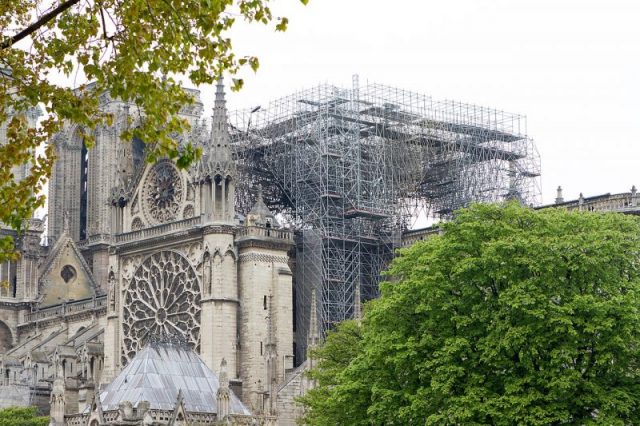
Still uncertain is the fate of other art pieces such as the paintings St. Thomas Aquinas, Fountain of Wisdom, done by Antoine Nicolas in 1648 and brought to Notre Dame in 1974.
At least four other immense paintings revealing scenes with the apostles and dated to the 17th and 18th-centuries had been reported partially damaged at best. Among the items that have been lost is a smaller piece of the Holy Crown of Thorns that was kept separately, and two relics associated with Saint Geneviève and Saint-Denis.
France declares international competition for architects to design new spire for #NotreDame https://t.co/NqnqZ6pYpP pic.twitter.com/mgwnoWVzqo
— Newsweek (@Newsweek) April 17, 2019
It is due to be reported on the scope of damage that suffered the exterior of Notre Dame, where some mesmerizing pieces of gargoyles and other mythological creatures have stood affixed for centuries, faithfully guarding the grandiose cathedral with their entrenched eyes.
In response to the catastrophic fire, millions have already been pledged in donations in order to restore the Notre Dame. A number of countries have already offered their help to France in the Notre Dame rebuilding effort that is to follow in the forthcoming years.
